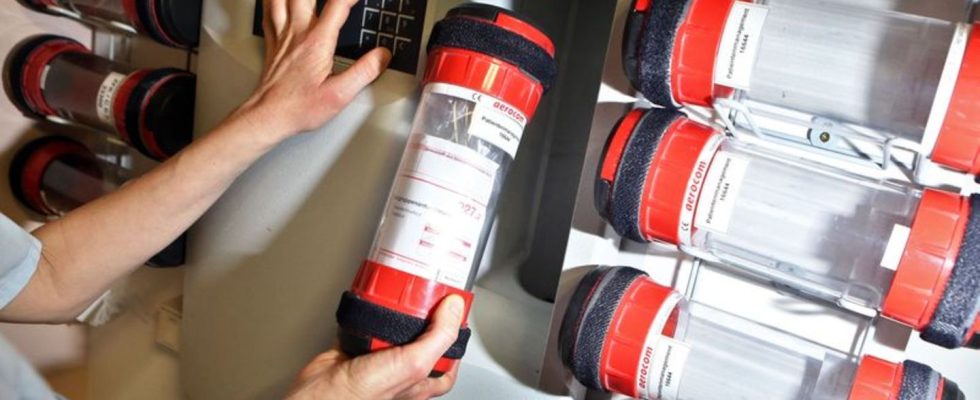Berlin
1000 shipments per year: Chancellery sends secret documents via pneumatic tube
Around 1,000 items are sent by pneumatic tube in the Chancellery every month (symbolic image). photo
© Jan Woitas/dpa-Zentralbild/dpa
A relic from the 19th century: The Chancellery will continue to use pneumatic tubes in 2023. What may sound old-fashioned has advantages, especially in the area of secrecy.
The Chancellery wants to send certain secret documents further within the building via pneumatic tube. “These are usually urgent processes that cannot be forwarded electronically or via house messenger service, for example because they are subject to secrecy or have to be signed in the original,” said a government spokesman in response to a query from the “Süddeutsche Zeitung”. “There are currently no plans to replace the system because of the advantages described.”
The pneumatic tube system in the Berlin Chancellery received an update in 2001
The pneumatic tube was invented in the middle of the 19th century. Cylindrical containers containing documents or other items are catapulted to the recipient using compressed air through a pipe system. By the beginning of the 20th century, networks that were sometimes hundreds of kilometers long had been created in large cities.
But the means of transport still holds up in the Internet age. In 2001, a pneumatic tube system with two lines, 1300 meters long and 36 stations was installed in the new Berlin Chancellery integrated. Since then it has been in “unrestricted use,” said the government spokesman. This would move around 1,000 shipments per month. The Chancellery states the costs for operation at 15,000 euros annually.

